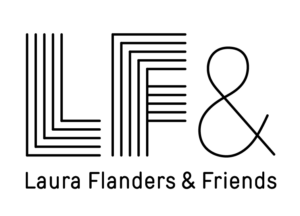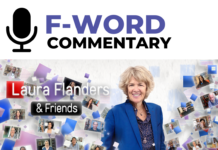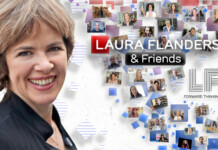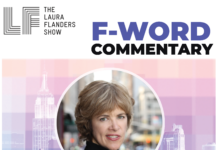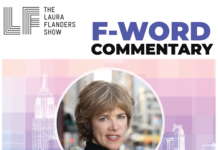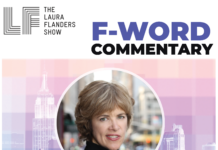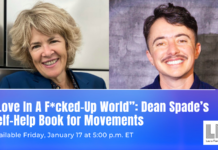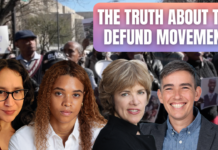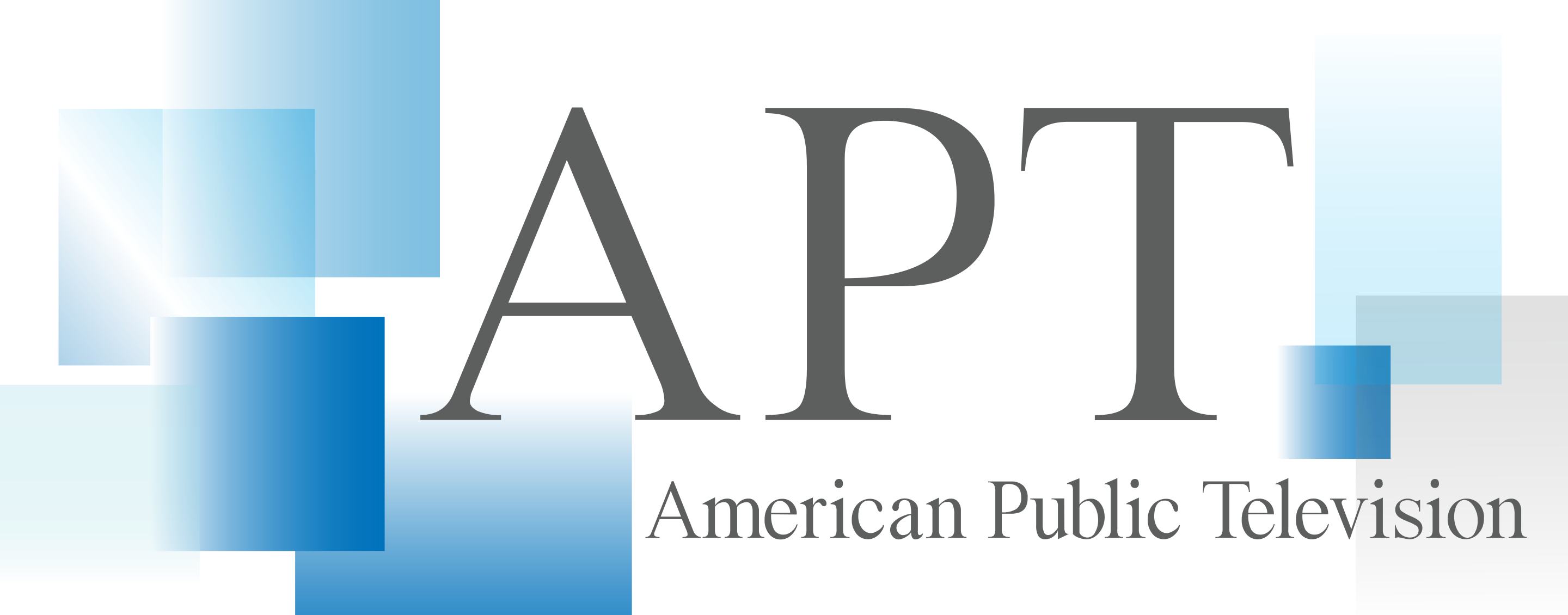About
“Standing Rock was our Ferguson,” indigenous activist and author Edgar Villanueva tells Laura Flanders in this week’s timely episode. 2020 was a watershed year for indigenous peoples’ movements. Native American organizers made great strides when it comes to elections, mutual aid and protests, but the Covid pandemic also took its toll, and nowhere more grievously than on Native American lives. This week, from the reservation on Pine Ridge to rural Arizona to the metropolis of New York City, Laura catches up with a newly-elected elections official, a philanthropist leading a radical shift in philanthropy and the organizer of one of the nation’s largest Indigenous alliances who is facing felony charges for his peaceful protest against President Trump’s visit to Mt. Rushmore.
Where are their movements headed in this new year with a new administration? And what lessons can we all learn from indigenous peoples’ organizing? This episode provides an illuminating background to the confirmation struggle surrounding Deb Haaland’s nomination to head up the Department of the Interior, the first Native American to be named to that position.
To listen to the uncut interviews, and to get research and reading notes for this episode, become a Patreon partner here.
Guests
- Gabriella Cázares-Kelly, Pima County Recorder, First Native American to win an elected county-wide seat in Arizona
- Nick Tilsen, President & CEO, of the NDN Collective
- Edgar Villanueva, Activist, Author, philanthropist, and Founder of the Decolonizing Wealth Project
Where to Watch
You can watch this episode on your local WORLD channel at 11:30 am ET on Sunday, February 19, or on your local PBS station.
Click here to search all airing times near you.
Or
Click here to watch online on YouTube. The episode will be made available at 11:30 am ET on Sunday, February 19.
Listen
Transcript
– Although we’ve been through so much this past year, there’s also does this glimmer of resilience.
– We can’t just fight to dismantle the system. We have to fight to actually build a new system at the same time.
– We saw the power of the Native vote. We saw unprecedented numbers of folks, Native folks, running for public office.
– Coming through.
– Indigenous women are coming through.
– Clear the way.
– We’re gonna come through no matter what, because we have to take care of our communities.
– It’s all coming up on the Laura Flanders Show, the place where the people will say it can’t be done take a backseat to the people who are doing it. Welcome, I’m Laura Flanders. 2020 was a watershed year in many ways for Indigenous people’s movements, but all that organizing didn’t start in 2020, nor will it end there. So, how did Indigenous people mobilize in the lead-up to this moment? Where are their movements headed in this new year with a new administration, and what lessons can we all learn from Indigenous people’s power? This week, I speak with Gabriella Cazares-Kelly, community organizer, just elected Pima County Recorder, making her the first Native American to win an elected countywide seat in Arizona; Nick Tilsen, president and CEO of the NDN Collective, about which we’ll hear a whole lot more, and Edgar Villanueva, activist, author, philanthropist, and founder of the Decolonizing Wealth Project. It has been quite a two years since the last time we spoke to you on the Laura Flanders Show. At the time, we were talking about your wonderful new book Decolonizing Wealth, and as this last year of 2020 broke out, the question of wealth and the absence of that were palpable and deadly on every front. Can you describe how the news hit you as 2020 began?
– It’s been extremely terrifying, on one hand. When we think about the devastation of the pandemic, more than just losing our elders, in some of our communities, there’s this risk of losing an entire nation. In some of our communities, we have very few folks who speak the language, who are the holders of our culture, and so we immediately had to organize to protect our sacred, our elders. So I was extremely just worried about my own family in North Carolina, but but deeply concerned for relatives in the Southwest part of the country. I didn’t know what to do from New York City as a Native person who was also living a block away from a hospital where I was seeing bodies carried out on a daily basis, other than rely on this network that I had built over the past two years of folks who were interested in decolonizing wealth. I was like, “Well, now is the time “to put all of this in practice. “We’ve been talking about this for two years. “Let’s launched this fund “and move some money to these communities.” Talk about this idea of money being medicine, that was my medicine. It was my way of coping, by doing all I could to raise funds to support communities who needed food, who needed PPE, who needed help in staying in their homes, where we needed to get cultural medicines and and healing supplies to our elders. So that’s how I passed the time. It also just reminded me of what I think I’ve always known, is that we cannot wait on or count on the federal government to take care of us, and we absolutely cannot count on or wait on philanthropy, big philanthropy, to take care of us. We had to take care of ourselves, and that’s exactly what we did.
– So how much did you end up raising?
– We raised over two million dollars, and I will say that once the ball got rolling and we were able to bring some visibility to the issues that were facing, we were quite successful with our fundraising. The two million dollars represents about just over a million that went to 90 Native-led organizations on the ground, and we also deployed just over a million dollars in direct cash payments to Native families who were impacted by the pandemic.
– What stands out, making this a particular, it seems to be potentially a turning point.
– You know, I think this year with the sort of awakening that we experienced around racial justice, and a big thanks to the Movement for Black Lives, that organizing and their work really kind of opened the door for some of the victories that we’ve been fighting for. We saw the power of the Native vote. We saw unprecedented numbers of folks, Native folks, running for public office. We saw victories from the Washington National Football Team to the things going on with DAPL. So it feels like in my community, although we’ve been through so much this past year, a lot of loss, a lot of death, there’s also this glimmer of resilience and hope and standing and grounding in our power that we know we’ve always had.
– Where do you go from here, and how do you think your work has been changed by this year?
– I think that from here, we have to continue to organize around increasing the visibility of Native folks. Standing Rock put us on the map for the first time for a lot of folks, including philanthropy, and the space that I work in, and since then, we have been really working to increase visibility and representation, not only in political office, which we talked about where we’re seeing record numbers of Native folks run for office, get elected for office, but we’re seeing efforts to increase representation in Hollywood and the media to push back on these ideas of of Native folks being these these relics of the past and of history. I’m very intentional with my backdrop here with New York City behind me, because we are wanting to educate folks that Native Americans live everywhere. In fact, about 70% of us live in cities. And so, that invisibility for me, I think of as our modern-day genocide. In my work around decolonizing wealth, I feel like there is more investment in Native communities than there have been in the past. Historically, we used the figure 0.04% of philanthropic giving. That’s the number that’s going to Native communities. In my heart, I want to believe that that’s increased in the last couple of years. I’ll be excited to see the new data. And so I hope that the change moving forward is that Indigenous folks and Black communities will continue to be centered in all of these strategies that are being developed by foundations, that we will be prioritized in giving, that folks will not only respond around election cycles, around crisis and disaster, but we’ll know that we’ve got to invest in the long-term, closing the race wealth gap so that our communities are not so devastated in the future when we face these types of situations again and I’m super inspired by all of the mutual aid that I saw popping up all around, where folks were taking care of us, right? We were taking care of each other, in a way that is really the root of what philanthropy, the work that I do, should be about. It should be about looking after our neighbor and making sure that the folks upstairs are okay and the folks across the street have what they need. The stories that I keep hearing about that type of response were super inspiring, and I hope that 10 years from now, or in the future, we look back and we say, “Hey, we forgot how to be in relationship with one another. “We forgot what it meant to be a good community leader “or a good relative, and at 2020 was a year “that we remembered and changed our course moving forward.”
– With pandemic-stricken Indigenous communities preparing for an election on the heels of a national uprising against racism, the idea of decolonization gained traction in 2020. Indigenous activists mobilized and demonstrated.
– But those cops aren’t our enemy. The system that they represent are.
– Nick Tilsen, a citizen of the Oglala Lakota Nation and president and CEO of NDN Collective, tells us how it all came about.
– You can change and make a difference.
– Defend, develop, decolonize are there words behind you on the wall, and you do all of that work. Let’s start with the defending part. What do you consider that you are defending in your work today?
– My team and the crews that I roll with, we fight to protect air, land, and water rights by organizing on the front lines and by participating in frontline activism while at the same time working towards solutions that help to develop our communities and our nations. The “develop” part is how is developing regenerative and inclusive economies based on Indigenous values, that we can’t just fight to dismantle the systems, but we have to fight to actually build a new system at the same time, one that actually is aligned with our values. I think that the work of NDN Collective was about, how do we fully resource? What does that look like to see an Indigenous people’s movement that is resourced? What happens when you absolutely change the conditions in which Indigenous self-determination is invested into, the theory being that when you invest into Indigenous self-determination, that it actually not just improves the quality of life for Indigenous people, but it also builds towards a more just and equitable world for all people and Mother Earth. And that’s what we know to be true, and that’s what NDN Collective does.
– This is what you call a loaded question, but how did the system as we know it work for you in Indian country in 2020?
– To be facing potentially 16 and a half years in prison for doing what my elders and my family and my people taught me to do, to stand up for my land and to stand up for my people’s liberation. That is fundamentally one of the flaws of the current system that’s in place, is the over-criminalization that is happening when people rise up and give their voice to change it.
– Can you describe the action that so-called Mount Rushmore when Donald Trump came that you got involved in there in the Black Hills?
– We were in this historic moment, right, in this nation where you have the uprising after the death of George Floyd, and in the middle of a global pandemic in which Indigenous people and Black folks and people of color were disproportionately affected, because we already had such struggling systems, and then you have President Trump sort of trying to be on this recovery tour, and announces he’s going to Tulsa, and then announces he’s coming to the heart of the Black Hills, the biggest symbol of white supremacy and systematic racism in the lands of the Oceti Sakowin, our people, that housed the longest existing legal battle over land in the history of the United States. There was no way that we were gonna let Donald Trump come into our territory without the free and prior informed consent of our leaders. And so, we stood in our power on our own land in ceremony and were confronted with the complete militarized zone, and in the aftermath of it, overcharging us, politically targeting certain people, all of those types of things, all because we’re reigniting an issue that fundamentally, they’re on the wrong side of history on. Absolutely. Even the Supreme Court thinks so, too. So there’s a lot there, and that’s what July third was about. And so in many ways, it became the catalytic for the Indigenous people’s movement to recenter these issues at a time that this country needs to be having those really hard conversation.
– We ain’t going nowhere. This is our land. It’s been our land for thousands of years.
– To the County Sheriff Department, to the Highway Patrol, this is a warning to each and every one of you. You are unlawfully on our land without the consent of our tribal leaders, in violation of our treaties. We have an opportunity now that we’re giving you to stand down and vacate our land.
– Whose land?
– Our land!
– Whose land?
– Our land!
– This is the land of the Oceti Sakowin. And we’re prepared to stand our ground. Today has been a proud day to be Lakota. Today has been a proud day to be Indigenous. We shut down for three hours, and we did it in a good way. We felt that power for our ancestors, each and every one of you.
– Hands behind your back. Hands behind your back. Hands behind your back.
– For our people, for our Black Hills.
– Right through here, sir.
– For the Oceti Sakowin.
– As we record this, we don’t know what will happen with your case. Have you got sort of an action plan for NDN regardless of what happens to you in that particular trial?
– We sort of built the organization more democratically, I would say, for the purpose of building resilience in leadership within the organization, knowing that when we take the stances that we’re taking, we are becoming political and legal targets to the very system which we’re trying to dismantle. And so, yeah, we have created a system to make sure that the NDN Collective continues to build and continues to do the work, regardless of what happens to me.
– In all of these conversations, I hear a kind of balancing between wanting to be heard and enfranchised and seen and appreciated inside the United States as part of a civil rights movement and as part of a specific Indigenous power movement, and at the same time, a desire to build sovereignty, to build independence, to build a sort of safe, self-sustaining, regenerative alternative model that perhaps doesn’t reflect decades of of colonization or centuries thereof. How do you balance that?
– I’m not a big person that comes from a place of reform, “Oh, let’s reform these systems.” I’m like, “Let’s dismantle these systems “and shift resources and decision-making power “into the people’s hands who’ve been most disenfranchised “by the system that’s in place.” That’s why I think when I think of “decolonize,” I think about the revitalization of Indigenous languages, of ceremonies, of lifeways, of governance structures, of returning Indigenous lands back into Indigenous hands and have us become the stewards of those lands, to build economic systems founded on our own values. And that translates to doing a lot more local work, creating policy and creating incentives to actually build stronger, more resilient communities.
– What is the responsibility of those of us who are living and breathing and making our livings and growing wealth on what has been the land of genocided people?
– The invisibility issue of Indigenous people isn’t an Indigenous people’s issue. It’s actually a responsibility. If American history was accurate, then every person in America would understand the plight of Indigenous people, the strategies which this country originally took to oppress Indigenous people and how that plays out in current society today. But we’ve created a system that puts it out of sight and out of mind. So I think one of the number-one things that you can actually do is know the truth and teach the truth and make sure that they’re teaching the truth in the school systems, and fund Indigenous-led efforts. Don’t don’t fund organizations that serve Indigenous people. Fund the things that are led by Indigenous people, because even the whole “serving us” is charity, not change. And I would say, really think about, in the context your own success, how do we leverage the privileges that we have to create impact and change in some of our communities? I think a lot of white folks are beginning, like we were talking to folks who wanna give land back to Indigenous people, who wanna deploy resources to Indigenous people that was gained off of the oppression of Indigenous people. I think that there’s a role for a lot of folks in that work that actually could contribute to making a much better world. And so it’s not like, we’re not coming for your houses with torches. We’re coming to your houses with our hand open and saying, “This is a collective problem that we have. “Let’s collectively try to solve it.” One of the number-one things that people could do to support our struggle in this place, both for myself and the other 20 land defenders that were arrested on July third, is to make sure that we’re not forgotten as we head into ’21, and make sure that our story is lifted up and make sure, because silence is violence. We’re fighting really, really hard against these charges. It’s important for us to recognize that we’re in these moments of fighting, that we have to mobilize our people and then mobilize people with us and for us too.
– Indigenous mobilization leading up to the 2020 election brought in a new wave of Native American officials at the local state and federal levels.
– Good day, my name is Gabriella Cazares-Kelly. I’m from the communities of Pisin’ Mo’o and Chuk, which are located on the Tohono Nation, right here in beautiful Pima County. I live in Southern Arizona. I live in Tucson, Arizona. I’m originally from the Tohono Nation, which is still a part of the same county, but it’s about the size of Connecticut. Most people don’t know it’s there, an Indian reservation, and we’re actually the second largest reservation in the country.
– Why was this year so important to you, important enough that you decided to run for office?
– The office that I was running for and that I have won overseas voter registration and early voting for the county, as well as document recording. But what I was seeing was there were so many systemic barriers in place that was keeping people from being able to register to vote or participate in early voting, which, in Arizona, we have 28 days of early voting. It’s a really huge period. And so, seeing the opportunity to get into this office and change how people are engaging with that information was really important to me. If people don’t have the opportunity to simply register to vote, it doesn’t matter if they have the right to vote, if they can’t access it. We have a really long history in Arizona of voter disenfranchisement specifically targeted to Indigenous people. Native Americans weren’t considered United States citizens until 1924, and in Arizona, we didn’t have the right to vote until 1948. When two World War II veterans came back from the war, they registered. They tried to register; they were denied. They sued the State of Arizona, and in 1948, we won the right to vote. But it didn’t mean that we had the protections. So, it wasn’t until the civil rights movement, The Civil Rights Act and The Voting Rights Act of 1965 that we were actually able to cast a ballot.
– You weren’t always an organizer. For a long time, you worked in education. What led you to take this step at this point in your life?
– I’ve been political all my life. I grew up on an Indian reservation. So I think when we talk about organizing, that is also something within Native communities that we do naturally. Whether or not it’s surrounding political issues, we’re constantly community organizing for issues, for education. And I think to even be a Native educator, to be somebody who is concerned about Indigenous education, is to be an activist, is to be an organizer.
– How so?
– Because you’re always having to advocate for things that make sense for your community. Educating and communicating needs is something that I’ve been doing for a very long time.
– You ran for office in a very unusual and wonderful way, epitomized I think by the flyer we can see behind you with you on a scooter. Yes. My friends and I, about a month before I had decided to run, were in DC. We were there to lobby, and we were traveling from each congressional office. And we took a break because we needed to have some fun because in order for you to stay in this work, you have to have fun. And so my friends and I hopped on these scooters, and I had never been on before, but when I did, I started saying, “Excuse me, Indigenous woman coming through, “Clear the way,” and people did. Excuse me, I’m Indigenous, coming through. Clear the way. And so what this was, this imagery is this idea, and it became my mantra for my campaign, that we’re gonna come through. No matter what, Indigenous women are coming through. We don’t have to ask for permission. We are no longer asking for permission, and I’m going to be myself to push for this, and we’re gonna do it in any way that we can.
– We should celebrate. As I understand, you got 60% of the vote. You will become the Pima County Recorder in January. You will be the first, in many ways, Native American, dot, dot, dot. Explain what you are in the way of a first in Arizona and the nation.
– I’m the first Native American to hold an elected countywide position in Pima County. So the first row officer ever elected as a Native American. I am the third in the state. It is a wonderful, amazing achievement, but it really goes to show the lack of representation that Native American people have had in leadership. Native American lands make up 25% of the state. Of course, the entire state is historically Native American. And when we talk about even just the word “Arizona,” that comes from the language. The city that I live in, Tucson, Cuk-Son, those all come from my language. So our influence has been here, but never with any power. What is happening at the borders, what is happening in our prisons, what is happening in our housing situation and our healthcare, everything is tied together, and the people that are suffering the most are Black and Brown people of Arizona. And we are the majority. When you empower more people and give them the tools they need to participate, it becomes more diverse and more democratic. And that’s what we’re going to continue to do. And so, we’re gonna continue to change Arizona for the better, because we have to take care of our communities.
– For more on this episode and other forward-thinking content and to tune into our podcast, visit our website at lauraflanders.org, and follow us on social media @TheLFShow.
Accessibility
The Laura Flanders Show is committed to making our programming, website and social media as accessible as possible to everyone, including those with visual, hearing, cognitive and motor impairments. We’re constantly working towards improving the accessibility of our content to ensure we provide equal access to all. If you would like to request accessibility-related assistance, report any accessibility problems, or request any information in accessible alternative formats, please contact us.
